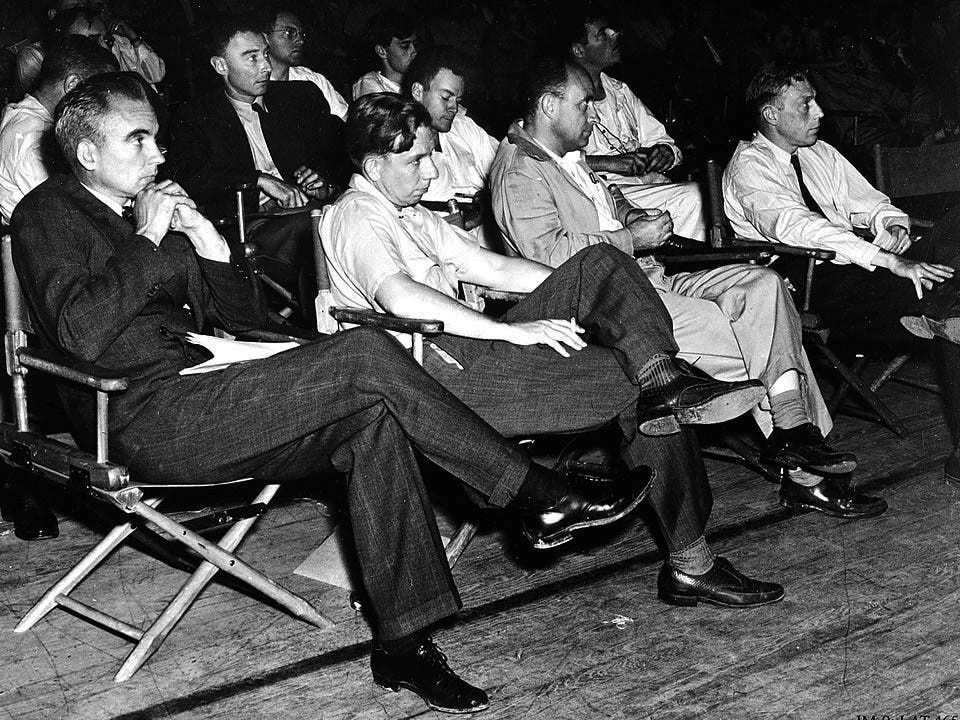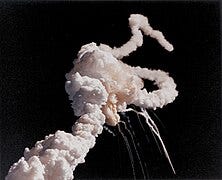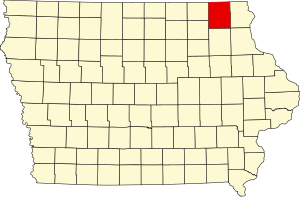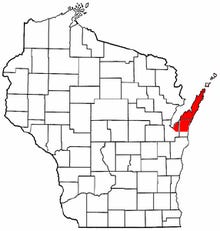Physicist Richard Feynman was one of the 20th century’s great scientists. He was only a lad of 24 when selected in 1943 to work on the Manhattan Project by Oppenheimer, who had this to say about him: “By all odds (he is) the most brilliant young physicist here, and everyone knows this.” Feynman later went on to win the Nobel Prize in Physics in 1965 and was a legendary communicator whose The Feynman Lectures on Physics, used to teach undergraduates at Cal Tech from 1961-64, may be the most famous textbook ever, in any subject. Feynman was also a unicorn amongst scientists in that he had a highly developed sense of humor, and I think we all can appreciate that. His collection of autobiographical essays, Surely You’re Joking, Mr. Feynman, might be the funniest book you’ll ever read.

That impressive bio omits the most famous aspect of his life: he was appointed to the Rogers Commission that was tasked with investigating the Space Shuttle Challenger disaster (1986). Greatly frustrated by the seeming disinterest of the chairman, former Secretary of State William P. Rogers (who called Feynman a pain in the ass) to determine the cause of the disaster, Feynman walked over to a scale model of the Space Shuttle in the hearing room and with a pair of pliers purchased at a hardware store on the way to the hearing, extracted some engine O-ring material from the model and dropped it in glass of ice water. The O-ring became brittle, and its pliability did not return after being extracted from the water. The morning of the Challenger launch the air temperature was 36F at Cape Canaveral, well below the O-ring’s low temperature rating of 53F. This was found to be the cause of the explosion that destroyed the Challenger.
NASA management, with the knowledge that President Reagan was to speak of the launch in his State of Union address that night, and while fearing agency irrelevance because of a public apathy regarding the space program, had reached a consensus that it was safe for the Challenger to launch. In doing so they ignored Allan McDonald, director of the rocket-booster program at Space Shuttle contractor Morton Thiokol, who recommended against the launch because of the cold temperatures. The decision to launch the ill-fated Challenger resulted in the deaths of all seven astronauts aboard, including schoolteacher Christa McAuliffe, chosen from many teacher applicants apparently to help restore some public interest in the Space Shuttle program.
The launch decision is now widely seen as an example of Groupthink, “a process of flawed decision making that occurs as a result of strong pressures among group members to reach an agreement” (Gruman et al. 2016). Harmony and conformity within the group are assigned more value than correct decision making, the latter of which becomes dysfunctional.
You can’t dip your toe into Iowa’s water quality woes without seeing groupthink in action. So many people are/were involved in publicly funded projects, research and policy of questionable merit that expressing disagreement on what is seen to be the fundamental causes and best solutions becomes taboo, and as a result, unanimity is projected to the public. Of course, this is what the ag and political establishment want because it squares up nicely with their slow walking the problem at a pace so slow that it will take the arrival of another glacier to force those in this polluting production system to change their ways. Groupthink says bushels >> clean water and one look around the countryside will tell you we have a bunch of one and precious little of the other.
Over the past month I’ve been observing and commenting on a proposed dairy manure digester in Southwestern Winneshiek County of Northeast Iowa. The digester would anaerobically (without oxygen) decompose the manure while off-gassed methane from the process would be captured and sold as natural or biogas to the operator of a nearby gas pipeline owned by one of Warren Buffet’s subsidiaries. The federal government is offering the operators of such digesters valuable carbon offsets which can be purchased by other parties that are large greenhouse gas emitters, such as the cement industry. This can be lucrative for the holders of the credits and is also one of the drivers of the much-discussed carbon pipeline for Iowa’s corn ethanol industry. There are about 250 manure digesters in the U.S. and the dairy industry especially is interested in this not-new technology to such an extent that they envision a day when milk, butter and cheese are a byproduct of energy generation. That day has already arrived for many of them.
Making these digesters work, both functionally and economically, requires a lot of animal waste, thus they are best suited to large dairy operations. What’s large? EPA classifies anything over 1000 animal units as large; since a dairy cow is 1.4 animal units, that would mean about 700 head. For a few reasons, digested manure waste is easier for a farmer to manage than is raw manure. Thus, a dairy farmer with a digester *can handle more animals* on the site that he or she otherwise might not have been able to handle previously. A digester might also encourage the enlargement of nearby herds owned by other farmers, given the proximity of a new means to process manures. And, those increased herd sizes and additional manure piles pose direct threats to the nearby water that the county’s comprehensive plan directs the Board of Supervisors to protect. I will return to the herd expansion issue later.
The Winneshiek Planning and Zoning Commission (PZC) recommended to the Board of Supervisors that it deny an application for a rezoning application that would have changed the property’s designated use from agricultural to industrial, required to accommodate the processes that capture and scrub the methane gas. Recommendations of PZCs in Iowa are not binding upon the Board of Supervisors and they agreed to rehear arguments.
The public notice for the August 5th supervisors meeting featured this language: “The following change in the zoning ordinance is to permit the construction and operation of a Digester Biogas processing Renewable Natural Gas Facility. You may appear, either in person or by agent or attorney in opposition or support of the proposed request.” I appeared along with many others in opposition to the digester.
But at the commencement of the meeting, the county auditor announced that “The construction of the biodigester is not what the rezoning is. The construction of the biodigester is applied through DNR, so this board’s actions today won’t approve or prohibit the construction of the digester.” At which point Board Chairperson Dan Langreck added “And on top of that, that goes along with the added manure, increase in herd sizes, all that goes back to the DNR,” and admonished the audience to not discuss “manure, herd sizes and water quality” concerns related to the digester. This admonishment apparently did not apply to the Supervisors themselves as Board member Mark Vick then presented a lengthy speech on how the Iowa farmer was basically John the Baptist just returned from Damascus Farm Implements Inc. with a John Deere manure spreader and so there was no need to talk about that anyway. And it was all downhill from there, with Langreck shouting down me and others wishing to comment on the potential environmental outcomes of the digester, culminating with the board overruling the PZC in a 3-2 vote and thereby approving the request for rezoning.
Then this past Tuesday (9/3/24) the Winneshiek County Board of Adjustment met to consider an application for a conditional use permit from the dairy (Full Bohr Dairy) which often results in series of conditions imposed on the construction or use of a facility to assure conformity with a zoning classification. Members of the public—including members of the PZC who had studied digesters and who were concerned that the existing zoning ordinance did not anticipate digesters or include protections for the public safety and welfare upon the construction of such facilities—appeared at the hearing. The meeting began with a representative of the digester design and operation contractor (Novilla RNG) describing the environmental benefits that will result from the digester(s). At this point my mind began to focus less on the smell of dairy manure and more on the smell of bullshit.
Our biggest water quality problem in Iowa is the nutrient (nitrogen and phosphorus) pollution from agriculture that imperils our drinking water, turns our lakes into unusable cauldrons of green slime, and helps kill off part of an ocean 1500 miles away. The Novilla RNG representative declared many times the digester would improve water quality and flatly stated that nutrient runoff would be reduced by the project. And herein lies the problems with digesters for states like Iowa that struggle with nutrient pollution: 1) digesting the manure waste does not address our nutrient imbalance (inputs > crop uptake), 2) does not reduce the nutrient content of the waste, 3) makes the nutrients in the waste more vulnerable to loss and 4) enables the farmer to dramatically expand the herd, thereby making 1, 2, and 3 worse. It’s my understanding the two digesters intended for the Full Bohr site are designed to accommodate 5000 dairy cattle each. The operation is currently permitted for 1183 animal units, which is about 845 mature dairy cattle.
It almost goes without saying that the digester will increase nutrient loading to the nearby watersheds (Turkey, Yellow, and Upper Iowa Rivers) where digested manure will be applied and will further imperil groundwater used for drinking. DNR testing shows 356 out of 1452 private wells in the county contaminated with nitrate. Kewaunee County of Wisconsin is an area of intense dairy production as well as a region where construction of manure digesters has been common. Livestock operators there with a digester have expanded their herds an average of 58% with a year over year increase of 5.8%. Yet, 60% of the private wells on the Door Peninsula are contaminated with coliform bacteria and the adjacent Green Bay portion of Lake Michigan now suffers an algae and nutrient-driven dead zone.
The public comments in this Board of Adjusters meeting generally fell into two bins: 1) deny the conditional use permit application to protect our water and 2) approve the permit because the Bohr family members whose corporate farm entity had submitted the conditional use permit application are “good people”. After the public comment period, the board discussed the application without mention of water quality, focusing more on the “good people” angle and whether a plan to decommission the digester(s) was necessary for approval. Ultimately the vote was 5-0 to approve.
The groupthink angle here is something I have commented on frequently, that is, historical characterizations of the Iowa farmer have now been elevated to cultural myth whereby the Iowa farmer is portrayed as the soul of the state and what’s good for them is good for Iowa, and thus we need to defer to their desires, demands and decisions.
Challenge that notion at your peril.
As I’ve gotten older, more and more I see this “good people” phenomenon as a feature and not a bug of our state’s institutions. I might’ve allowed myself to think Winneshiek County could be a little different because tourism is a legitimate industry there. Trout fishing, rafting and the paddling sports are dependent on clean water and are a real draw to both in- and out-of-state visitors. Tourist money is also green but comes without a stench and degrades the water not at all. In 2021, tourism in Winneshiek County produced $37 million in direct visitor spending, supported 417 jobs, and generated more than $8.7 million in state and local tax revenues. Tourism spending doubled from 2020 to 2021. And unlike industrial agriculture, tourism is an industry that does not require public subsidies or indemnification, does not rely on undocumented labor smuggled in from border countries, and most importantly, does not ask the public to endure or pay to clean up its pollution. Is a healthy tourism industry consistent with largescale livestock production? I suggest to you it is not. I’ve been to over 90 of Iowa’s 99 counties and I look at the natural beauty of Winneshiek County and ask myself why its elected leaders apparently want it to look like the rest of Iowa.
Resources
https://en.wikipedia.org/wiki/Rogers_Commission_Report
Gruman, J. A., Schneider, F. W. , &. Coutts, L.M. (Eds.). (2016). Applied social psychology: Understanding and addressing social and practical problems 3rd edition. SAGE Publications.
https://hoards.com/article-30925-energy-revenue-could-be-a-game-changer-for-dairy-farms.html
https://www.thegazette.com/agriculture/winneshiek-supervisors-decline-to-block-manure-digester/
https://decorahnews.com/news/12775/full-bohr-dairy-master-matrix-removed-from-agenda/
https://foe.org/wp-content/uploads/2024/06/WI-Case-Study_v2.pdf
Iowa Private Wells Contaminated with Nitrate and Bacteria, Iowa Private Well Testing, 2002-2017. Iowa Environmental Council and Environmental Working Group. https://www.ewg.org/interactive-maps/2019_iowa_wells/map/.
Report says tourism spending is soaring in Winneshiek County. Decorah News, May 10, 2023. https://decorahnews.com/news/8197/top-story-report-says-tourism-spending-is-soaring-in-winneshiek-county/.







Where was all that talk about farmers being “good people” when smaller, less rapacious farms were being chased off the land by policies that favored big ag? Are only large-scale farmers “good people”?
And you are Iowa's Richard Feynman on water quality.